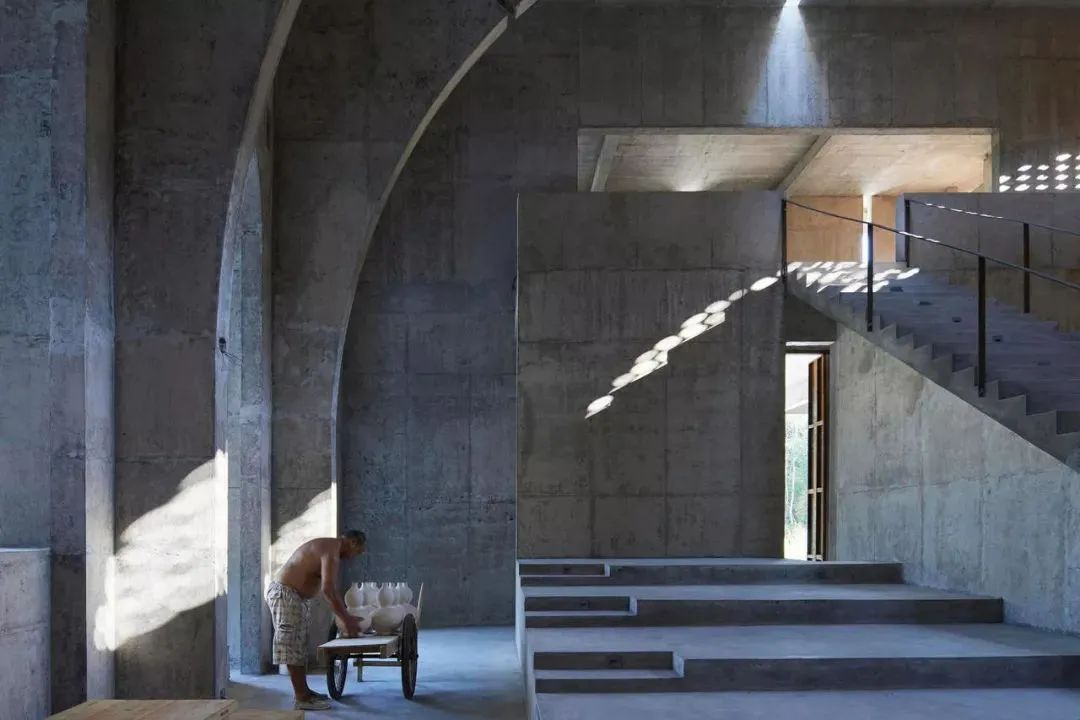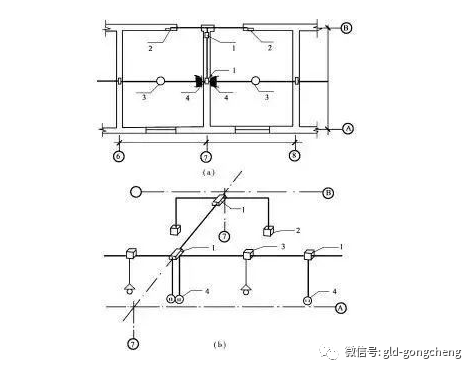Outside the metropolitan area, there are many high-quality contemporary buildings scattered in many local provinces and cities in China
. 
For those who want to take a short construction trip, these “places” are just good places for weekend or short vacation
. 
In this issue of architectural map, we will focus on Jiangxi, a place that seems marginal and silent in the southern provinces of China
. 
Even so, when Jingdezhen, Wuyuan, Jinggangshan and other topics are mentioned, the scenery of Jiangxi will still make people yearn
. 
“Edge” also has good landscape
. 
The architectural landscape of Jiangxi is also worth looking forward to
. 
The architectural design of erliting guest house: Dong Yugan, Zhou Yi, Wang Juan coordinates: Furniture parapet around the tree of niejiaerliting square court in Changling, De’an County Photography: Zeng Renzhen’s view of the hanging court restricted by the screen and shallow porch Photography: Zeng Renzhen’s view of the frame of erliting guest house roof scene Photography: Zeng Renzhen’s floating corridor turns to the angle entrance of the guest house Photo: Zeng Renzhen click on the picture to learn more about the project
. 
Erliting guest house is a garden building designed by an architect for his middle school friends
. 
Between the grand five picture Hall (main house) and the secluded guest house, the architect plans to build an empty court with both openness and seclusion
. 
It happened that most of the trees planted by the owners in that year were planted along the edge of the base of the pigsty
. 
Unexpectedly, they were scattered trees, which enclosed an eight meter square shady space
. 
Therefore, it was planned to open a courtyard under the forest between the trees
. 
“Based on the past experience of furniture construction, a low wall with different heights is built on the southwest side of the kongting
. 
The south wall is as low as a bench, and the mortar is smoothed to provide two-way seating for the South and north of the kongting
. 
The west wall is as high as a Tiaoshan, and the case is embedded in a pool for washing melons and fruits in the court
. 
They intersect between the slanting branches of the Broussonetia papyrifera, and provide a pleasant shade for the body in the process of life.” 02 Jingdezhen Royal Kiln Museum Architectural Design: Zhu Jian Architectural Design Office coordinates: 78 Shengli Road, Jingdezhen City ― Zhu Jian Architectural Design Office Royal Kiln Museum is located in the center of Jingdezhen Historical District, adjacent to the Ming and Qing Imperial kiln sites
. 
Around the lot, there are many historical porcelain kiln sites of different sizes
. 
The ruins of these old kilns and the immortal memory handed down from generation to generation are the natural source of the Royal Kiln Museum
. 
The unique Oriental archetype of porcelain kiln and the memory of kiln brick’s time and temperature shape the consanguinity of kiln, porcelain and human
. 
There are many brick arches of different sizes and volumes
. 
If they are close to each other, they are like falling wood, creating a relaxed, accidental, manual and natural atmosphere
. 
Walking between the brick arches and the courtyard, people can feel a kind of familiar and unfamiliar space experience
. 
03 architectural design of sanbaopeng Art Center: large building coordinates: Sanbao Road, Jingcheng Town, Jingdezhen City click on the picture to learn more about the project photo: sun Haiting’s long and narrow valley, streams flowing through, for thousands of years, “Tong Tong Tong”, the same sound of water hammer reverberates for a long time
. 
A huge spaceship, I don’t know how long it’s been docked
. 
It’s full of mud and moss, but its strong shape is still clear in the beautiful southern valley
. 
This is what the sanbaopeng art center looks like in Sanbao village, Jingdezhen
. 
There is a strong contrast between the building and the environment, just like the black square stele in the movie “2001 Space Odyssey”
. 
In the natural environment, the pure geometric form is the feedback that architects get from the environment
. 
The whole exhibition hall extends 150 meters in a straight line visually, but it is found that there are multiple streamline juxtaposition and interpenetration after actually entering
. 
The architect’s intention was not to let people see everything at once
. 
Usually, exhibition space is prepared for exhibits and streamlines
. 
What is more concerned here is the ambiguous relationship between people and the space where the exhibits are located
. 
Throughout the most intense architectural sensory elements are: the wall, more or as a tool to establish a space atmosphere
. 
Several main materials used in the building: rammed earth, titanium zinc plate, and cave stone, are easy to leave traces of time, which is also what architects want to see
. 
Wandering in the building, people will feel the power of tragedy from time to time, just like the sound of a cello
. 
04 sanbaopeng Ceramic Design Center architectural design: Manjing architectural coordinates: Sanbao Road, Jingcheng Town, Jingdezhen City photo: Tian Fangfang} Manjing architecture Jingdezhen sanbaopeng art settlement is located in a valley of xichaowu, Sanbao village, Jingdezhen City, Jiangxi Province
. 
Manjing architecture has completed the overall planning of the whole art settlement and the design of four groups of buildings
. 
The ceramic design center is one of them
. 
The building is shaped like a full moon, floating on the water, so it is called Shuiyue Pavilion
. 
The water moon Pavilion is located at the turning point of a stream at the foot of the mountain
. 
Both sides of the stream are high in the West and low in the East, and the stream flows down from south to north
. 
Although there is topographic water potential, it is very common in the surrounding valleys
. 
The architect hopes that the final space can present the wild intention of the small landscape to the greatest extent, so the building gently crosses the stream with a soft posture, crawls on the ground, reproduces the ups and downs of the original site with the indoor elevation difference, and frames the internal water courtyard with the turning point of the stream as the center
.
The overall shape of the building comes from saggers, which are used to place porcelain carcasses in order to isolate fire and smoke
.
05 architectural design of bingding Chai kiln in Jingdezhen: Zhang Lei United architectural office coordinates: Qian in Qiancheng village, Xianghu Town, Jingdezhen City photo: Yao Li click on the picture to learn the details of the project photo: he Zhenhuan bingding Chai kiln space ritual sense creation takes the kiln as the core, the kiln house uses the concrete arch similar to the brick arch structure of the kiln as the space motif, and strengthens the East-West axial alignment with the kiln as the center It is called sequence
.
The light belt on the top, the windows on the wall and the vertical seam on the ground all point to the central axis of the kiln
.
The long and thin sky light falls from the center of the roof and moves on the surface of the kiln with time
.
From the inside and outside, the fire, stars, heaven and man are in one
.
The functional zoning of the kiln house is arranged according to the production process and visit experience
.
The production line is concentrated on the bottom floor, including the platform area in front of the kiln and the steps on both sides of the stairs
.
It is mainly used during the period of full kiln, kiln burning and kiln opening
.
The streamline of visiting and experiencing is mainly concentrated on the second floor, with the kiln as the center and around the building
.
Through the spatial guidance of the vault, we can experience the vivid spatial relationship between the building and the kiln from different angles, and highlight the core position of the kiln full of ritual
.
06 repair and reconstruction of Liugeng hall in Hongguan village, Wuyuan City Architectural Design: Sanwen architectural coordinates: No.17, Hongguan village, Zheyuan Township, Wuyuan County photo: Fang Liming project is located in Hongguan village, Wuyuan County, Jiangxi Province
.
It is a famous ink making Holy Land in the Ming and Qing Dynasties
.
It is said that “smoke and ink in the world are separated from Huizhou, and smoke and ink in Huizhou are separated from Hongguan”
.
Liugengtang, located at the entrance of Hongguan village, is a rare house with courtyard
.
The special location and open courtyard make Liugeng hall “dissociate” from the dense texture of the ancient village, which is one of the reasons why the owners rent it for a long time and renovate it as a home stay
.
When the design team intervened, the building repair work was nearly completed, and the building spatial pattern had been basically determined
.
According to the new use function – B & B, the design team first combed the streamline: simplified the original repeated stairs of the building, and connected three independent areas on the second floor to form a continuous traffic streamline
.
Then the public service space and accommodation space are divided
.
In the design, the second and third floors of the main hall and guest hall are defined as guest rooms, with a total of 13 rooms
.
The first floor and the original kitchen are used as public service and catering space, with study, piano room, studio, chess room, tea room, catering and other functional space
.
The courtyard was reorganized to retain the osmanthus and jujube trees with spatial properties, and a cafe was added in the southeast, which not only met the daily needs of residents, but also received tourists from Hongguan village.
.



